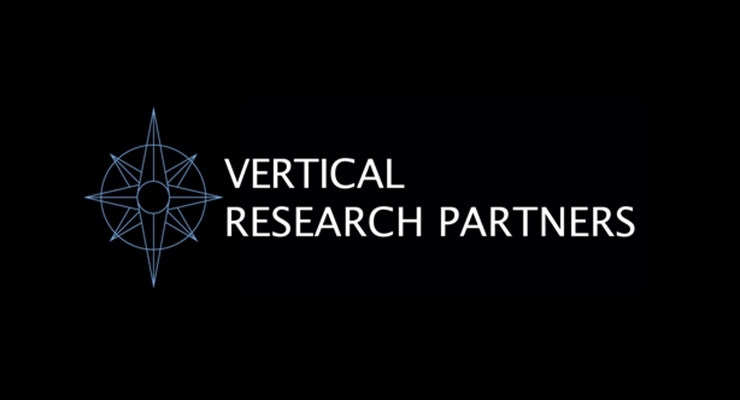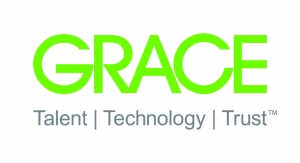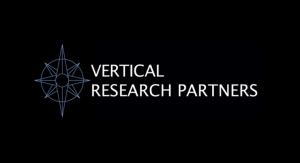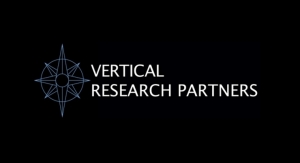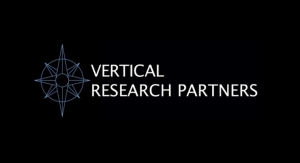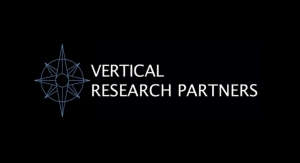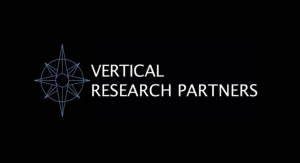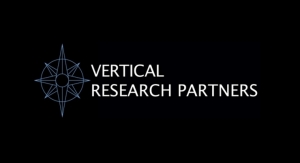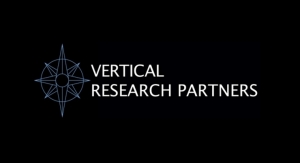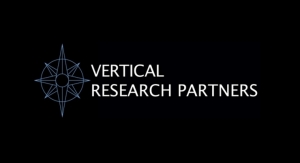07.08.18
W.R. Grace and Co. (GRA: Buy, $82 PT))
Charts a Course of Steady Growth at Investor Day
• Management delivered a consistent message in New York. On Friday, we attended Grace’s investor day at the NYSE, where outgoing CEO Fred Festa, COO and CEO designate Hudson La Force, CFO Tom Blaser and the balance of senior leadership provided an update on the company’s strategy and growth opportunities across the portfolio. On balance we would describe the event as straightforward, helpful and educational in nature. Rather than revealing radical departures, the company’s message was quite consistent, relative to both history and our own expectations as outlined in our preview of the event (click here). Grace likewise affirmed its existing financial goals for the five-year period ended 2021 and also for 2018, including projected EPS growth of 9-12% this year, or 11-14% as adjusted for the $25mn in cash proceeds from business interruption insurance that the company received in 2017. With the recent pullback in the shares, we think GRA should appeal to SMID-cap growth and value managers alike with potential upside of 28% to our price target of $82.
• Management affirmed existing financial targets. COO and CEO-designate Hudson La Force provided an overview of the company strategy, which included a reiteration of Grace’s long term financial targets, shown in Figure 1. The total sales CAGR of 6-8% will be achieved through organic innovation, reinvestment and market growth (4-6%) as well as M&A (2%). While the total sales CAGR represents the combination of organic and inorganic activities, the company’s EBITDA and EPS CAGRs guides are based solely on organic performance. Thus...
• Specialty catalysts play a lead role in Grace’s growth strategy. Assuming completion of the pending acquisition of Albemarle’s polyolefin catalyst business, Grace will control roughly one-third of the global polypropylene (PP) and polyethylene (PE) resin catalyst markets. The company has been spending significant capital over the past five years to expand its portfolio of polyolefin catalysts given the attractive growth and margin profile. Since 2010, Grace has grown the business from a small base to ~40% of the company’s total catalyst sales in 2017. With a forecast CAGR of...
• Fluid cracking catalyst (FCC) business is still positioned to grow. Grace opened its comments on the FCC business by acknowledging the transition from petrol to battery-powered vehicles. However, the company continues to stress the durability of the FCC business in this environment. Roughly 40% of a refinery’s gasoline production occurs in the FCC unit, and this remains the most profitable and flexible method of gasoline production available to a refiner. Thus, Grace views this as the last source of production to be curtailed in the event that a refinery must choose to shutter capacity in a future environment of shrinking demand. In the meantime…
• Hydro-processing catalysts (HPC) are set to capitalize on more stringent environmental rules. Grace believes the tighter regulations on global gasoline and diesel contaminants will continue to be a powerful driver of demand growth in the years to come. This trend is likely to continue as more stringent marine fuel sulfur requirements become effective in 2020. For example...
• Materials Technologies (MT) will focus on innovation and industry rollup. While the company is happy with its footprint in consumer/pharma, chemical process industries (CPI), and coatings, there is plenty of room for growth. At only $440mn in 2017 revenues, the MT segment operates in a fragmented industry with nearly $10bn of addressable market value. Thus...
• We maintain our Buy rating and target of $82. Our price target of $82 suggests total upside potential of 28%, including a dividend yield of 1.5%. GRA shares now trade at a 2018 P/E multiple of 16.8x, unadjusted for an estimated $4 per share in net present value (NPV) of tax assets, and 15.8x our 2018 EPS as adjusted for the NPV of tax assets. This tax-adjusted multiple represents a discount of 3.8 turns or 19% vs. the average specialty chemical company, and a slight premium to the median 2018 P/E multiple of 15.7x for our entire coverage universe of chemical stocks. Our valuation of GRA is based on an average of two methodologies: DCF analysis and a relative P/E framework. Our DCF analysis suggests a warranted stock price of $82, which incorporates an advantage cash tax rate of 14% through 2025 as well as a WACC of 7.9% and a terminal growth rate of 3.0%.Using our relative P/E framework wherein we apply a 20% premium to the S&P500 multiple, we calculate warranted value of $82 per GRA share.
(Please see full report for details)
Charts a Course of Steady Growth at Investor Day
• Management delivered a consistent message in New York. On Friday, we attended Grace’s investor day at the NYSE, where outgoing CEO Fred Festa, COO and CEO designate Hudson La Force, CFO Tom Blaser and the balance of senior leadership provided an update on the company’s strategy and growth opportunities across the portfolio. On balance we would describe the event as straightforward, helpful and educational in nature. Rather than revealing radical departures, the company’s message was quite consistent, relative to both history and our own expectations as outlined in our preview of the event (click here). Grace likewise affirmed its existing financial goals for the five-year period ended 2021 and also for 2018, including projected EPS growth of 9-12% this year, or 11-14% as adjusted for the $25mn in cash proceeds from business interruption insurance that the company received in 2017. With the recent pullback in the shares, we think GRA should appeal to SMID-cap growth and value managers alike with potential upside of 28% to our price target of $82.
• Management affirmed existing financial targets. COO and CEO-designate Hudson La Force provided an overview of the company strategy, which included a reiteration of Grace’s long term financial targets, shown in Figure 1. The total sales CAGR of 6-8% will be achieved through organic innovation, reinvestment and market growth (4-6%) as well as M&A (2%). While the total sales CAGR represents the combination of organic and inorganic activities, the company’s EBITDA and EPS CAGRs guides are based solely on organic performance. Thus...
• Specialty catalysts play a lead role in Grace’s growth strategy. Assuming completion of the pending acquisition of Albemarle’s polyolefin catalyst business, Grace will control roughly one-third of the global polypropylene (PP) and polyethylene (PE) resin catalyst markets. The company has been spending significant capital over the past five years to expand its portfolio of polyolefin catalysts given the attractive growth and margin profile. Since 2010, Grace has grown the business from a small base to ~40% of the company’s total catalyst sales in 2017. With a forecast CAGR of...
• Fluid cracking catalyst (FCC) business is still positioned to grow. Grace opened its comments on the FCC business by acknowledging the transition from petrol to battery-powered vehicles. However, the company continues to stress the durability of the FCC business in this environment. Roughly 40% of a refinery’s gasoline production occurs in the FCC unit, and this remains the most profitable and flexible method of gasoline production available to a refiner. Thus, Grace views this as the last source of production to be curtailed in the event that a refinery must choose to shutter capacity in a future environment of shrinking demand. In the meantime…
• Hydro-processing catalysts (HPC) are set to capitalize on more stringent environmental rules. Grace believes the tighter regulations on global gasoline and diesel contaminants will continue to be a powerful driver of demand growth in the years to come. This trend is likely to continue as more stringent marine fuel sulfur requirements become effective in 2020. For example...
• Materials Technologies (MT) will focus on innovation and industry rollup. While the company is happy with its footprint in consumer/pharma, chemical process industries (CPI), and coatings, there is plenty of room for growth. At only $440mn in 2017 revenues, the MT segment operates in a fragmented industry with nearly $10bn of addressable market value. Thus...
• We maintain our Buy rating and target of $82. Our price target of $82 suggests total upside potential of 28%, including a dividend yield of 1.5%. GRA shares now trade at a 2018 P/E multiple of 16.8x, unadjusted for an estimated $4 per share in net present value (NPV) of tax assets, and 15.8x our 2018 EPS as adjusted for the NPV of tax assets. This tax-adjusted multiple represents a discount of 3.8 turns or 19% vs. the average specialty chemical company, and a slight premium to the median 2018 P/E multiple of 15.7x for our entire coverage universe of chemical stocks. Our valuation of GRA is based on an average of two methodologies: DCF analysis and a relative P/E framework. Our DCF analysis suggests a warranted stock price of $82, which incorporates an advantage cash tax rate of 14% through 2025 as well as a WACC of 7.9% and a terminal growth rate of 3.0%.Using our relative P/E framework wherein we apply a 20% premium to the S&P500 multiple, we calculate warranted value of $82 per GRA share.
(Please see full report for details)

